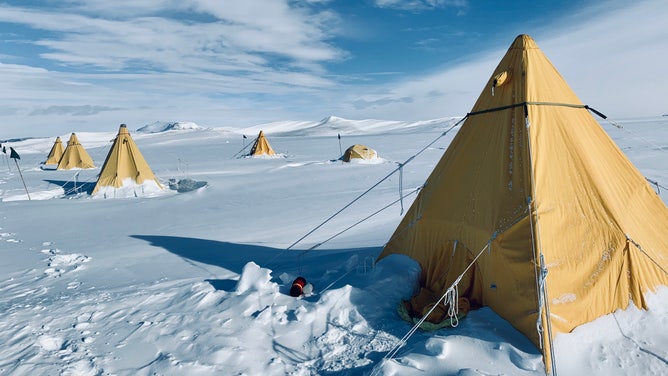Researchers studying oldest ice on Earth become first Antarctic field camp to use Starlink internet
Antarctica isn't on Starlink's service map just yet, but according to COLDEX, the internet service continues to give the research base “unprecedented connectivity." The National Science Foundation-funded center is in search of the oldest ice cores on Earth, some more than 2 million years.
Starlink 'dishy' providing internet to Antarctica climate research base
The Center for Oldest Ice Exploration in Allan Hills, Antarctica shared this video of 30 knot (34.5 mph) winds, saying despite the cold and wind Starlink internet continues to work for the base that is searching for the oldest ice on Earth. (Video credit: Peter Neff/ Center for Coldest Ice Exploration/NSF/Oregon State University)
When it comes to brutal weather to work in, it can't get much more extreme than Antarctica, where ice, wind and snow dominate the landscape.
The Center for Oldest Ice Exploration (COLDEX) at the Allan Hills base on the ice shelf of Antarctica is about as remote as you can get, but the climate researchers in search of ancient ice do have internet.
COLDEX researcher Peter Neff, a University of Minnesota glaciologist, has been documenting this season's efforts in east Antarctica, sharing the experience with more than 200,000 followers on TikTok as @icy_pete.
Before departing for the Antarctic, Neff tested using Starlink to chat on FaceTime while still at the University of Minnesota.
"We will be the first Antarctic field camp to test this system for SpaceX and the National Science Foundation," Neff said in October.
Starlink is the space-based internet from SpaceX, which uses thousands of satellites orbiting the Earth to provide Wi-Fi connectivity to dozens of countries and even remote areas.
HOW TO WATCH FOX WEATHER ON TV
Recently, COLDEX shared a video of a Starlink "dishy" facing off against 35 mph winds and blowing snow.
SpaceX founder Elon Musk responded to the video on Twitter demonstrating the technology against the frozen landscape.
"Wild that we can see what was frozen 2.7 million years ago!" Musk wrote about the ice COLDEX aims to study.

Allan Hills tents during the 2019-20 field season at COLDEX. (Photo by Jenna Epifanio, Oregon State University)
Antarctica isn't on Starlink's service map yet, but according to COLDEX, the service is working and continues to give the research base "unprecedented connectivity."
The company recently added Starlink service to Pitcairn Island and Easter Island. SpaceX said these are two of the most remote areas in the world. Now, SpaceX can add Antarctica to that list.
According to SpaceX, "Starlink is designed and tested to handle a wide range of temperatures and weather conditions including snow, hail, sleet, heavy rain, and extreme heat."
The internet dishes nicknamed "dishy" also melt snow to prevent icy build-up from blocking the connection. Starlink can operate between minus 22 and 122 degrees, according to SpaceX.
STARLINK INTERNET ‘DISHY’ FACES OFF AGAINST SNOW, WILDFIRES IN REMOTE CANADA
Based on COLDEX scientists' success with Starlink, the space-based internet can work well under these extreme temperatures and wind. This week's forecast includes temperatures in the single digits and winds up to 22 mph, according to the Norwegian Meteorological Institute.
Studying ancient ice
The National Science Foundation-funded center, led by Oregon State University, was founded in search of the oldest ice cores on Earth, some as old as 2.7 million years. More than a dozen universities send researchers to the base to contribute to the program.
These cores are collected by drilling miles down into the ice and contain dust and ancient air bubbles that offer clues to help scientists better understand Earth's atmospheric changes.
The residents at COLDEX pay close attention to the forecast because drilling for ancient ice cores requires calm weather.
After arriving at the National Science Foundation's central Antarctic research hub, McMurdo Station, in November, the COLDEX team is now using Starlink to help livestream and share their research with the world.
In December, Neff said teams are beginning the "coring phase" of this research season at Allan Hills.
Last season, researchers with COLDEX found ice estimated to be between 2 and 3 million years old.
